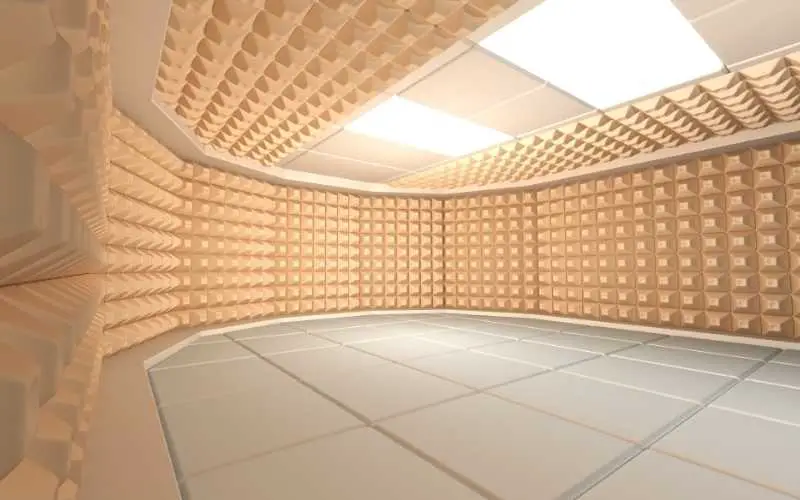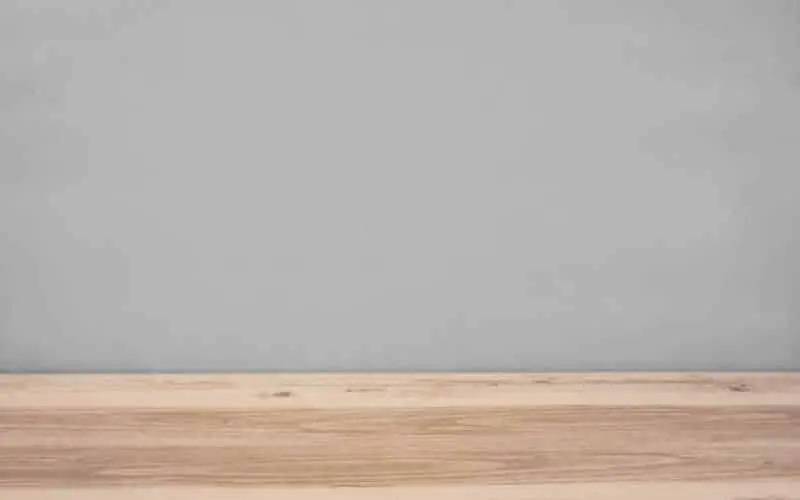It is simple to see why wood and tile flooring are so prevalent in today’s houses. They give beauty and warmth to homes while being easier to maintain and endure longer.
However, one disadvantage to consider is that they perform significantly poorer acoustically. Untreated hardwood floors can have a lot of echoes and poor sound quality.
The best soundproof flooring materials include Roberts Super Felt Premium Underlayment, Fatmat Sound Deadener, Roxul Rockboard 60, Pro Source EVA Foam Tiles, and Premium Grip Rug Pad.
If you’re renovating with tile or wood flooring, several items and practices can help prevent noise concerns from occurring.
Even if you already have a floor that makes a lot of noise, don’t give up hope; all you need to do is get creative with different things to lessen the echo and footsteps noises.
This article will show you the best materials for soundproofing floors and improving your home’s acoustics.
Related: Best Underlay for Laminate Floor
What to Search For In Soundproof Flooring Materials (The Big Three)
Table of Contents
STC (Sound Transmission Class)
STC is a numerical figure that indicates how well a structure, or in this case, a floor, reduces the impact of airborne noise.
A higher STC indicates that the material is better at absorbing noise in rooms with wood or laminate floors.
IIC (Impact Insulation Class)
IIC is a numerical value that indicates how well a floor assembly reduces the effects of impact noise, such as footsteps, furniture, and machinery.
The greater the number, the more effective the material reduces those noises.
Thickness & Density
Mass is critical in soundproofing, and you’ll see that our top picks are thicker and denser than the rest. If enhanced performance is vital to you, you’ll pay a little extra.
Even the thinner 2mm rolls will perform significantly better acoustically than the low-cost essential underlayment available at large box home improvement stores.
The Best Soundproof Flooring Materials
These materials are grouped into categories according to their different qualities and functions.
Acoustic Underlayment
A soundproof underlayment is a type of substance that goes over the subflooring (usually plywood or Hardie board) and under the final flooring (wood, laminate, or tile)
Cork sheets, vinyl, rubber, and foam are common underlay materials.
These solid materials provide good sound isolation and impact dampening (footsteps). For wood, laminate, and tile floors, here are some of the best acoustic underlayment options:
1. Roberts Super Felt Premium Underlayment
Roberts Super Premium Underlayment is a high-performance felt underlayment constructed in part from recycled fibers and manufactured utilizing a high-heat manufacturing process for soundproofing and cushioning floors.
The dense nature of the felt makes it an ideal material for absorbing rather than reflecting sounds.
Roberts is an excellent choice for laminate or engineered flooring since it is inherently insulating, keeping chilly floors warm in the winter and cool in the summer.
The 3mm thick felt is simple to install and corrects any minor sub-floor flaws. It includes a moisture-resistant film overlay that helps maintain laminate and engineered floors.
Fast installation is made possible by the overlap and adhesive strip. A 2-1/2″ overlap strip with adhesive is easy to apply.
2. QuietWalk Plus
Super Felt can be replaced with QuietWalk Plus underlayment. While slightly less dense (11.5 vs. 14.5 lbs./ft. 3) than the other, it has similar noise-proofing characteristics and costs less.
QuietWalk Plus is one of the best underlayments for laminate, hardwood, and engineered wood floors because of its performance and versatility.
It can also be used under vinyl, LVT, and WPC/SPC planks 5mm or thicker (but not ceramic tile).
It’s pretty simple to set up. The floor and underlayment can be floated over the QuietWalk, double glued, or even nailed to the subfloor.
The vapor barrier self-heals around the fasteners to keep the vapor barrier intact.
QuietWalk Plus is LEEDTM compliant with 94 points for ecologically conscious homeowners and builders.
Sound Deadening Vinyl
MLV, or sound deadening vinyl, is a solid, rubbery substance with adhesive on one side.
The dense vinyl can be used for various purposes, including flooring. The material’s density serves to dampen sound and foot traffic noise.
It’s a flexible material that can be cut into almost any form to suit your needs.
1. Fatmat Sound Deadener
FatMat Sound Deadener absorbs noises and vibrations that travel through vehicle flooring, helping to eliminate annoying noises.
Road noise, engine and exhaust noise, and irritating rattling are all examples.
It’s simple to cut, peel off, and apply FatMat.
It can protect your car’s floor, doors, trunks, trucks, RVs, yachts, and even residences. It comes in five 18″ x 40″ self-adhesive sheets.
Noise and vibration absorption are used to combat audio vibrational distortion.
With the provided installation kit, it’s simple to set up.
Self-adhesive and straightforward to mold and cut to match your specific needs.
Read: 8 Common Mistakes When Laying Laminate Flooring
2. TMS Mass Loaded Vinyl
TMS Mass Loaded Vinyl is one-eighth inch thick and has an STC of 27. This product has no odor because it is made of extruded virgin material.
Wrapping the mass-loaded vinyl around pipes and other barriers is possible. It works for a variety of noises and decreases noise transfer.
It is designed for use on floors, walls, and automobiles with an STC of 27; it is heavy and dense.
Extruded virgin material is used to make this high-quality product.
For carpet and other floor materials, use this acoustic underlayment. It also works on ceilings, walls, HVAC system components, and loud pipes.
Using heavy-duty scissors or a utility knife, quickly trim it to size. Roll it out, make sure it’s the right size, and secure it in place.
Soundproof Floor Insulation
If you’re just getting started with your flooring job, putting acoustic insulation batts under the subfloor between the joists is one of the best ways to soundproof the floors.
The insulation will fit snugly between the floor beams, just like it does in walls, and can lower the sound between the floors in your structure.
1. Roxul Rockboard 60
Choose Roxul Mineral Wool Floor Insulation if your acoustic project necessitates a stiff material.
The batts are perfect for filling the floor structure before placing the subflooring, but they’re also popular as bass traps in recording studios and home theatres.
Soundproofing is excellent, with a high NRC rating. It is Water-repellent and simple to cut and install A fire hazard rating.
It also comes in six-piece containers with 24″ x 48″ x 2″ panels. It’s critical to put on suitable safety gear when installing this product to avoid inhaling the material and coming into contact with your eyes and skin.
Gloves, eye protection, long-sleeved, loose-fitting clothing, and a breathing mask are all recommended.
Acoustic Floor Tiles
These items are intended to be used with other soundproofing materials for floors.
They can reduce noise on their own, but they work best when combined with underlayment and floor mats to reduce echoing.
The mats absorb noise in high-traffic areas and on walls to absorb sound.
1. Pro Source EVA Foam Tiles
These interlocking foam tiles are ideal for putting on top of existing flooring.
They’re ideal for gyms, weight rooms, martial art studios, trade exhibitions, children’s playrooms, daycares, and more because they’re lightweight, robust, and simple to install.
These tiles are available in various colors and give style, comfort, and soundproofing. Each box has 12 2″ by 2″ interlocking tiles that cover 48 square feet. Borders are covered as well.
Non-skid interlocking tiles can be used in almost any place and in various ways. It is a lightweight, water-resistant, and inexpensive way to reduce noise and echo in homes and gyms.
Sound Absorbing Carpet Padding
Soundproof Carpet pads are a denser, thicker version of the carpet padding that most people use.
The pad is dense enough to absorb sound and prevent footsteps from being heard in other house areas.
1. Premium Grip Rug Pad
This non-slip rug is made from 100 percent recycled all-natural rubber and felt and is suitable for both hard and soft surfaces, such as hardwood floors and carpets.
It is made to keep your rug in place and help it last longer and is available in reversible 8′ x 10′ rugs, which add padding to your existing rug while also protecting surfaces and offering a non-slip surface.
It is reversible and composed of recycled materials so that it won’t slip. Moisture messes usually respond well to spot cleaning. Low VOC content and certified by the Green Air Label.
Read: How to Install Underlayment for Vinyl Plank Flooring
Conclusion
Two materials stand out from the rest of the materials accessible today. Both Roberts Super Felt and QuietWalk Plus are constructed from recyclable materials, are simple to install, and provide excellent acoustic and impact absorption.
Hardwood, laminate, floating engineered, and vinyl plank floors benefit from this acoustic underlayment.
Because you’ll be spending a significant amount of money on your new flooring, it’s best not to skimp on the installation.
These days, there are a lot of choices for soundproofing flooring. An excellent acoustic underlayment helps the flooring install and float properly, improves acoustic performance, and serves as a moisture barrier.
We hope you found it helpful and informative. If you did, please share it across your entire social media pages.

